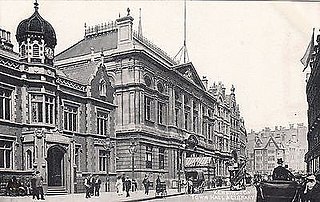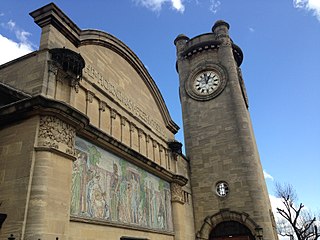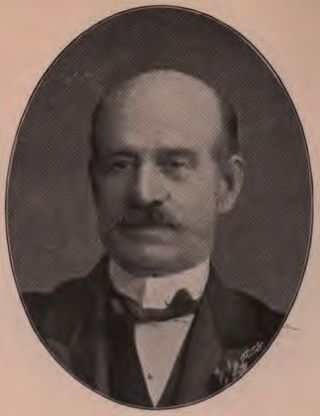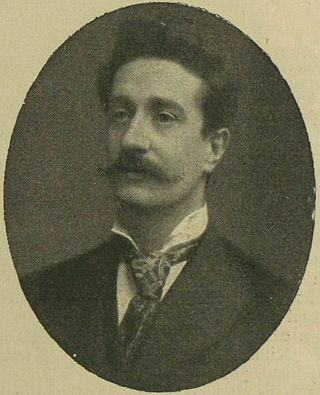Kensal Green is an area in north-west London. It lies mainly in the London Borough of Brent, with a small part to the south within Kensington and Chelsea. Kensal Green is located on the Harrow Road, about 4.4 miles (7.1 km) miles from Charing Cross.

The Royal Borough of Kensington and Chelsea is an Inner London borough with royal status. It is the smallest borough in London and the second smallest district in England; it is one of the most densely populated administrative regions in the United Kingdom. It includes affluent areas such as Notting Hill, Kensington, South Kensington, Chelsea, and Knightsbridge.

Notting Hill is a district of West London, England, in the Royal Borough of Kensington and Chelsea. Notting Hill is known for being a cosmopolitan and multicultural neighbourhood, hosting the annual Notting Hill Carnival and Portobello Road Market. From around 1870, Notting Hill had an association with artists.

The Metropolitan Borough of Chelsea was a metropolitan borough of the County of London between 1900 and 1965. It was created by the London Government Act 1899 from most of the ancient parish of Chelsea. It was amalgamated in 1965 under the London Government Act 1963, with the Royal Borough of Kensington to form the Royal Borough of Kensington and Chelsea.

The Metropolitan Borough of Kensington was a Metropolitan borough in the County of London from 1900 to 1965, which since 1901 was known as the Royal Borough of Kensington, following the death of Queen Victoria, in accordance with her wishes.

The Horniman Museum and Gardens is a museum in Forest Hill, London, England. Commissioned in 1898, it opened in 1901 and was designed by Charles Harrison Townsend in the Modern Style. It has displays of anthropology, natural history and musical instruments, and is known for its large collection of taxidermied animals. The building is Grade II* listed.

Frederick John Horniman was an English tea trader and founder of the Horniman Museum in London. He was brought up and lived in Croydon, Park Hill area.
The Royal Borough of Kensington and Chelsea, an Inner London borough, has responsibility for some of the parks and open spaces within its boundaries. Most of them are relatively small: many are the typical London square, built to service the houses around that square. Two of the larger open spaces both form part of the "Magnificent Seven" cemeteries, being those at Brompton and Kensal Green. The parks are policed by the Royal Borough of Kensington and Chelsea Parks Police.

North Kensington is an area of west London. It is north of Notting Hill and south of Kensal Green and in the Royal Borough of Kensington and Chelsea. The names North Kensington and Ladbroke Grove describe the same area.

Kensal Town is a district located partly in the Royal Borough of Kensington and Chelsea, and partly in the City of Westminster. The area lies four miles north-west of Charing Cross and is part of the W postcode area. Kensal Town was an exclave of Chelsea from the middle ages, through to 1900.

The Tabernacle is a Grade II-listed building in Powis Square, Notting Hill, west London, England, built in 1887 as a church. The building boasts a curved Romanesque façade of red brick and terracotta, and towers with broach spires on either side. Today the Tabernacle serves as a cultural arts and entertainment venue, including a theatre, meeting rooms, music studio, art gallery, bar and kitchen, conservatory and a garden courtyard.
The UK National Panorama Competition, a Saturday evening event that immediately precedes the Notting Hill Carnival, is a major showcase for Trinidad and Tobago Steel Pan, or, music. Held at Emslie Horniman's Pleasance park in the London Borough of Kensington and Chelsea it typically involves approximately 1,000 performers, and attracts almost 5,000 spectators. Steel Bands from around the UK prepare a music performance, arranged to last for up to 10 minutes, and compete for the Panorama Championship.

Dissenters' Chapel, Kensal Green, is a working chapel with gallery attached in Kensal Green Cemetery, North Kensington, London. It is recorded in the National Heritage List for England as a designated Grade II* listed building, and is under the care of the Historic Chapels Trust.

Ladbroke Square is a garden square in Notting Hill, west London, England.

Golborne Road is a street in the Royal Borough of Kensington and Chelsea in London's Kensal Town. The road runs east from Portobello Road to Kensal Road.

Emslie John Horniman was a British anthropologist, philanthropist and Liberal Party politician.
Horniman is an English surname.

Garden Corner is a Grade II* listed house at 13 Chelsea Embankment, Chelsea, London.
Madeline Agnes Agar was a British landscape designer. She was an early professional female landscape designer in Britain, and responsible for the design and the layout of a number of public gardens across London in the early 20th-century. She was the second woman to be the landscape gardener for the Metropolitan Public Gardens Association and was an author of books on gardening.














